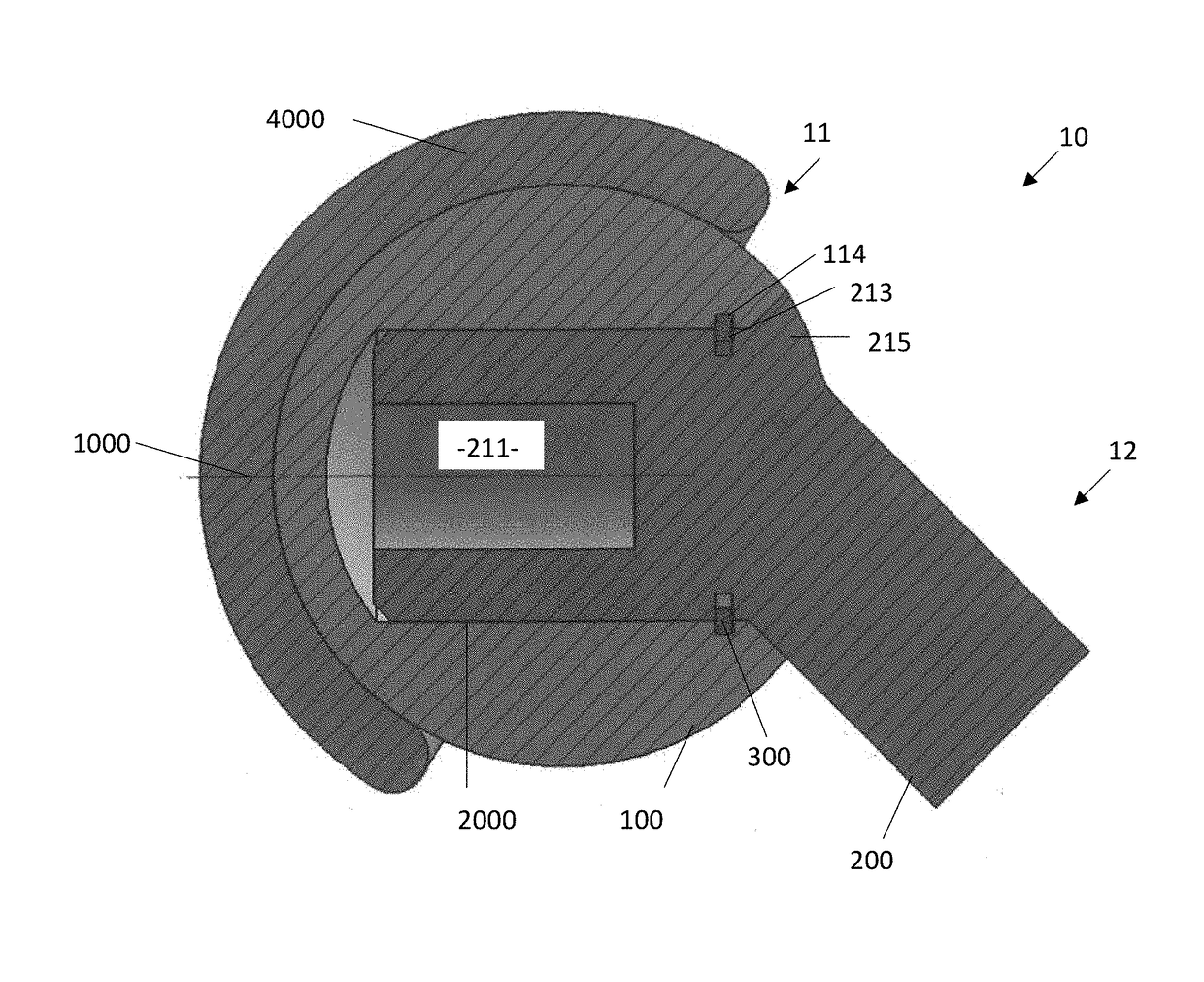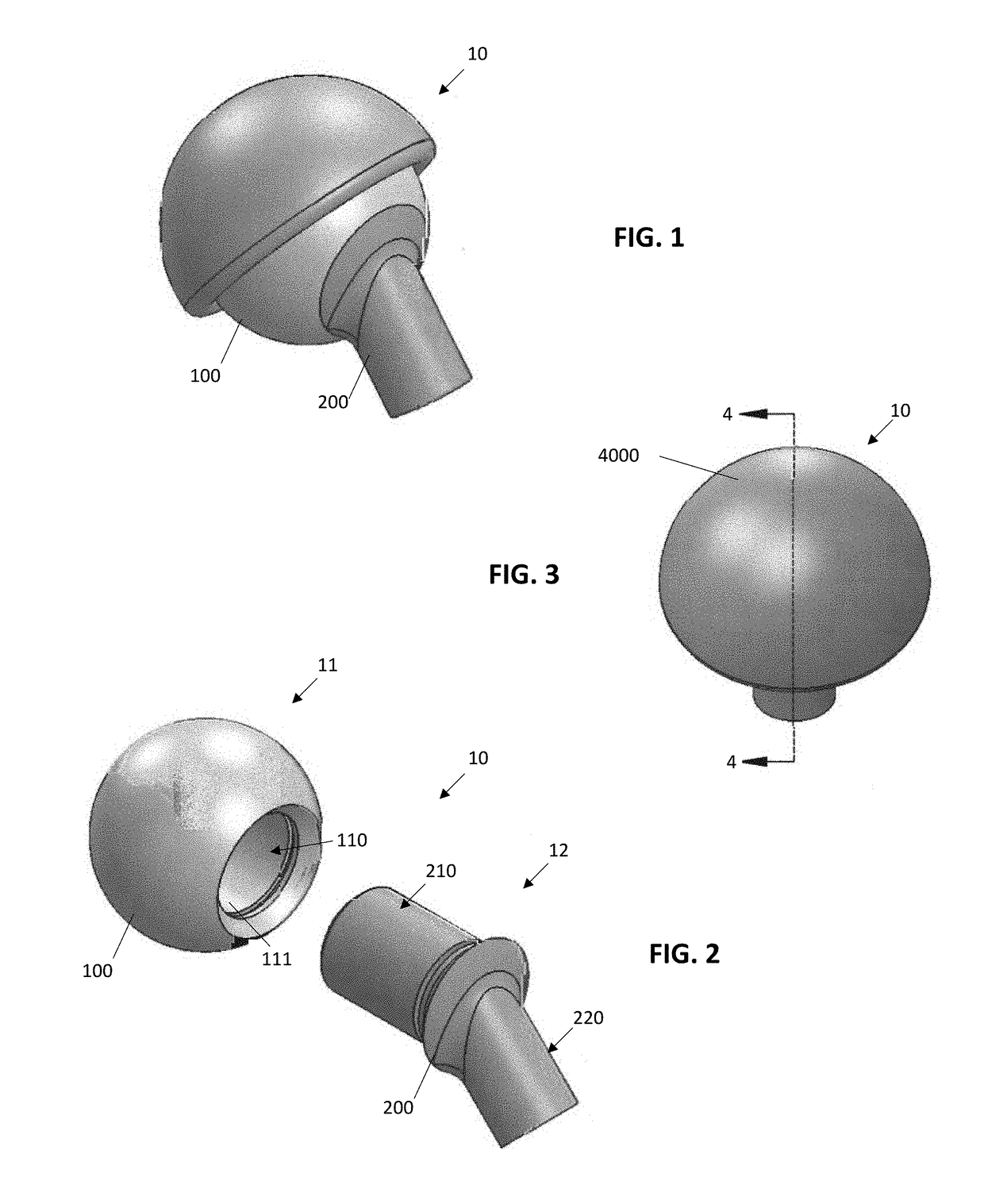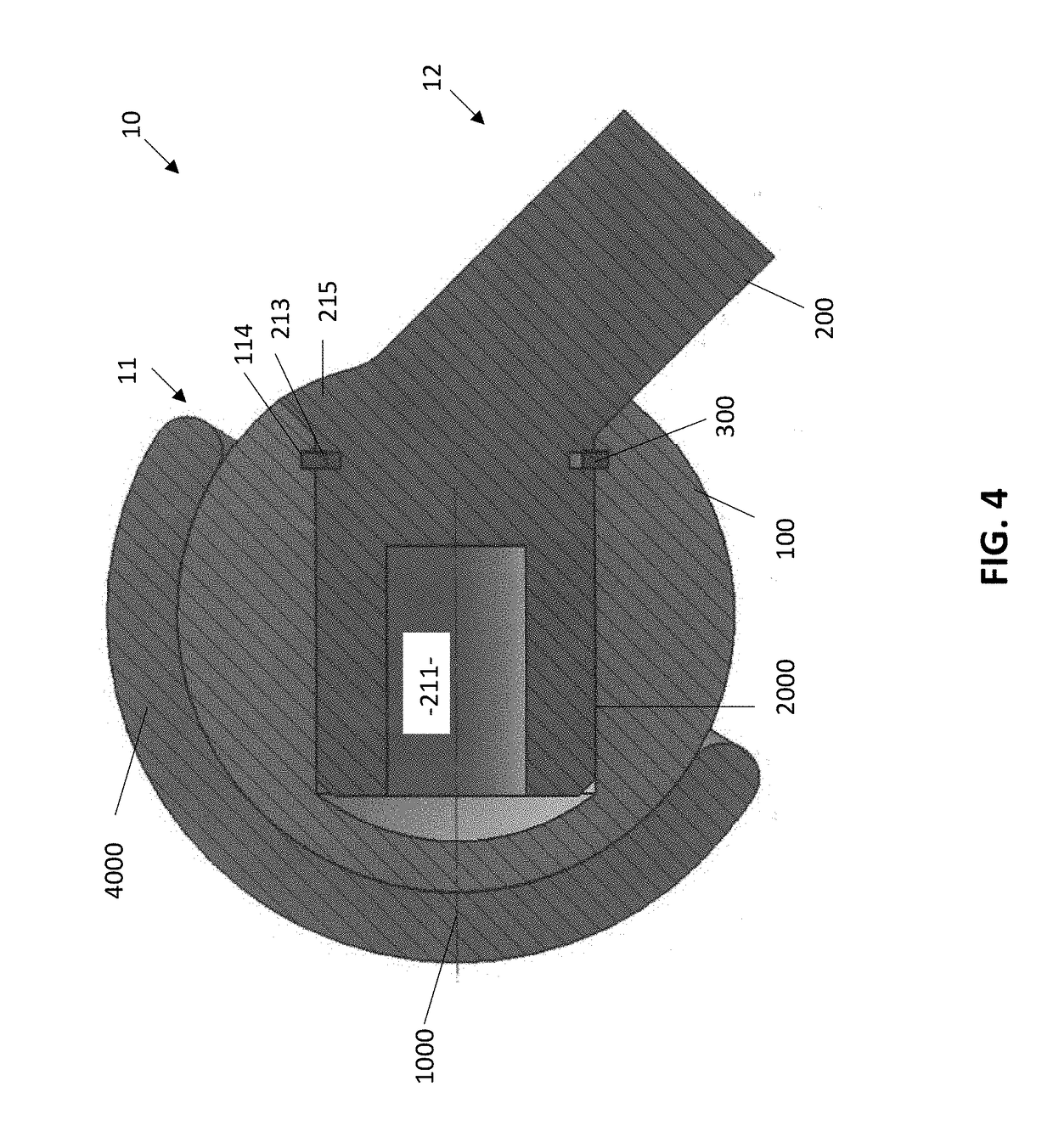Coaxial fully articulating joint
a fully articulating, coaxial technology, applied in the direction of prosthesis, acetabular cup, medical science, etc., can solve the problems of large head and large volumetric wear, and achieve the effect of reducing wear, avoiding complications, and extending the life of the implant of the present invention
- Summary
- Abstract
- Description
- Claims
- Application Information
AI Technical Summary
Benefits of technology
Problems solved by technology
Method used
Image
Examples
Embodiment Construction
[0048]With reference to FIGS. 1-4, one embodiment of the present invention is directed to an orthopedic hip prosthesis 10 including a proximal member 11 and a distal member 12, as best shown in FIG. 2. The head 100 is a substantially spherical member, which approximates the geometry of a traditional hip replacement prosthesis with notable exceptions. The head 100 will be generally of a larger diameter than its modern equivalents due to the elimination of the “traditional” liner, which tends to be quite thick in dimension, and shell (or, in certain embodiments, replacement of the “traditional” liner and shell with at least a thin shell). Additionally, the head 100 includes a recess 110, such as shown in FIG. 2, with the recess 110 having an inner surface 111.
[0049]Another component of the orthopedic hip prosthesis 10 is the neck 200. The neck 200 of the depicted embodiment includes an axle 210, as shown in FIG. 2, which has an outer surface 214. As may be seen, the axle 210 is corres...
PUM
 Login to View More
Login to View More Abstract
Description
Claims
Application Information
 Login to View More
Login to View More - R&D
- Intellectual Property
- Life Sciences
- Materials
- Tech Scout
- Unparalleled Data Quality
- Higher Quality Content
- 60% Fewer Hallucinations
Browse by: Latest US Patents, China's latest patents, Technical Efficacy Thesaurus, Application Domain, Technology Topic, Popular Technical Reports.
© 2025 PatSnap. All rights reserved.Legal|Privacy policy|Modern Slavery Act Transparency Statement|Sitemap|About US| Contact US: help@patsnap.com



